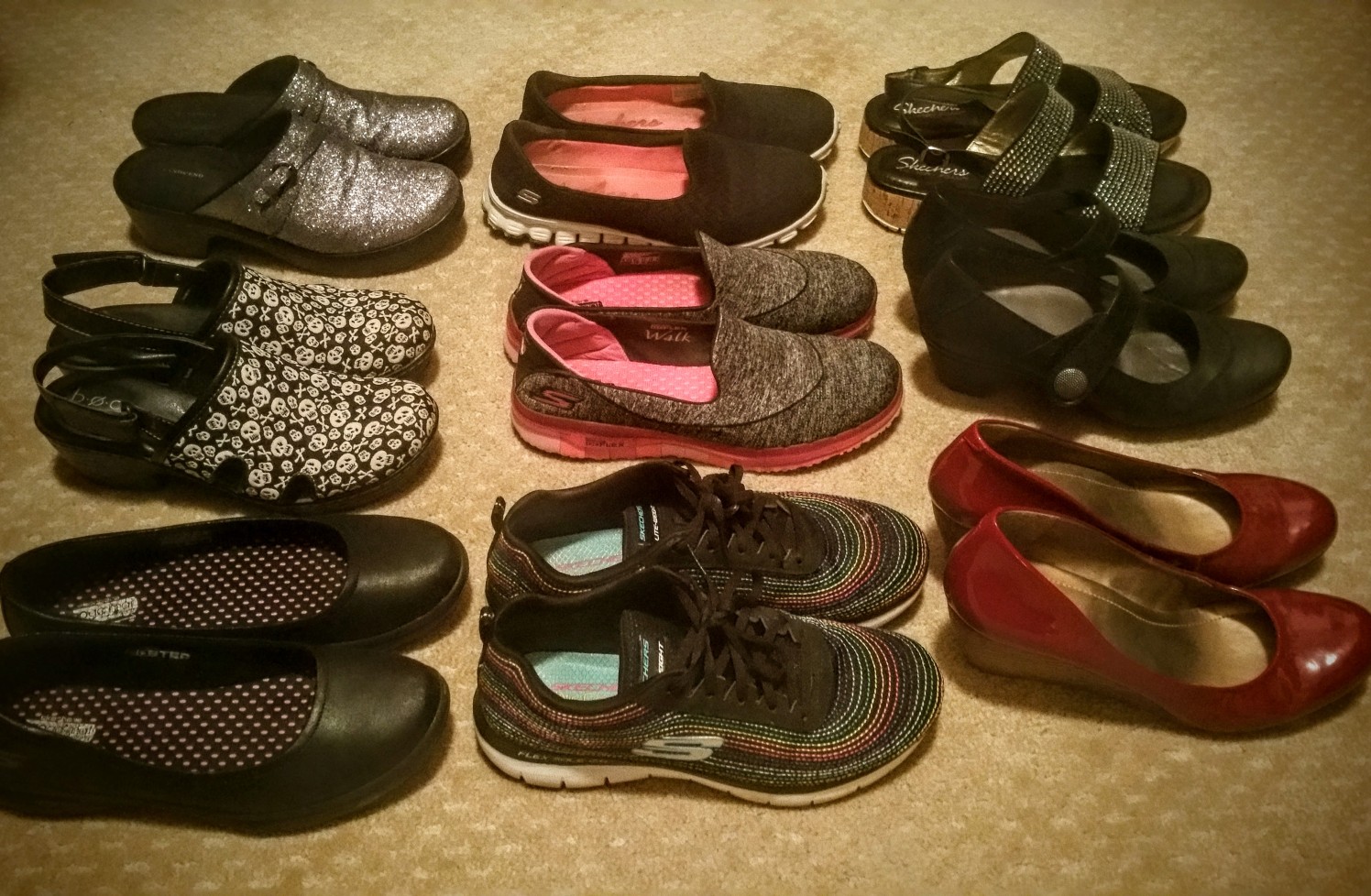 Would you rather have a great teacher with mediocre shoes or a mediocre teacher with great shoes?
Would you rather have a great teacher with mediocre shoes or a mediocre teacher with great shoes?
I’m thinking (hoping) nearly 100% would choose the former.
Admittedly, the question is not quite fair: it’s not an either/or. One can, after all, be a great teacher with great shoes (I would offer my friend Kristin as a prime example). And, I would like to think that for much of my career, I too was a great teacher with great shoes.
Now, however, as I begin my 24th year in the classroom, I strive to be a great teacher with mediocre shoes. I am no longer in the business of donning spectacular shoes at school.
You see, last year mid-December, I was at an out-of-town conference when my feet retaliated against 22 ½ years of daily heel wearing. For no reason clear to me at the time, by the end of the day, I literally hopped back to my hotel room, my left foot painful to the touch. Anti-inflammatories were my short term cure; sensible shoes have been my long term solution.
- My former workwear (no longer in my life): high heels and low support.
My teaching tip this month? Wear sensible shoes!
Why?
- Your feet are your foundation. The average teacher takes 4,726 steps per day at school, the equivalent of climbing the staircase in the Empire State Building three times! The realization that I made that trip, in heels, for 20+ years makes me feel more than a bit foolish.
- Girl Power: We know that becoming good at anything is the result of hard work, reflection, and incremental improvement, not great shoes. Let’s model for our female students that we are more than just our footwear. Astonishingly, the American Podiatric Medical Association found that 42% of women say they will wear a shoe they like even if it causes them pain. To that, we must say “Yikes!” and “Never again!”
- Be Good to Yourself. We try to drink more water, eat less processed foods, exercise, floss...why not also wear shoes that won’t hurt our long-term mobility?
- K.I.S.S.: Keep it Simple Stupid. Throwing on comfortable outfit and sensible shoes in the morning will get you to work fifteen minutes earlier which will make you more effective all day long.
- As educators, we are always looking at data to learn about student achievement and student needs. Why aren’t we also “data-driven” about ourselves. Data shows that the angle a high heel nullifies our natural shock absorbing abilities, stiffens our achilles tendons, shortens ankle and calf tendons, and changes our natural gait (Women’s Health). Dr. Sajid Surve of the American Osteopath Association writes “The effects aren’t limited to the feet; it’s not unusual for people who spend lots of time in high heels to have low back, neck and shoulder pain because the shoes disrupt the natural form of the body.” The data is clear: down with high heels, up with arch support.
- My new-and-improved school shoes: low heal, high support.
This is why, educators far and wide, I implore you to be a great teacher with mediocre shoes.

